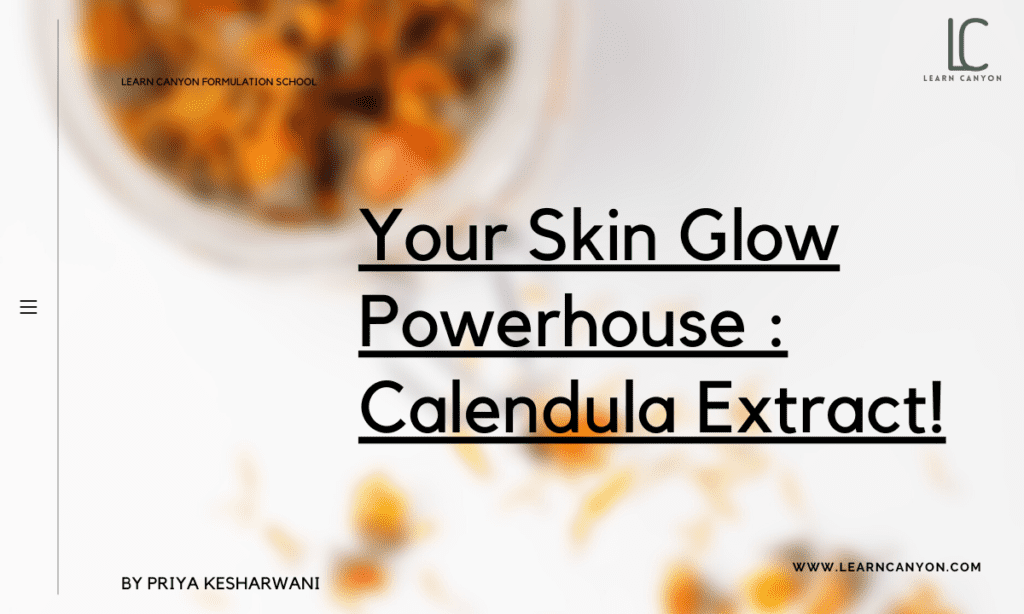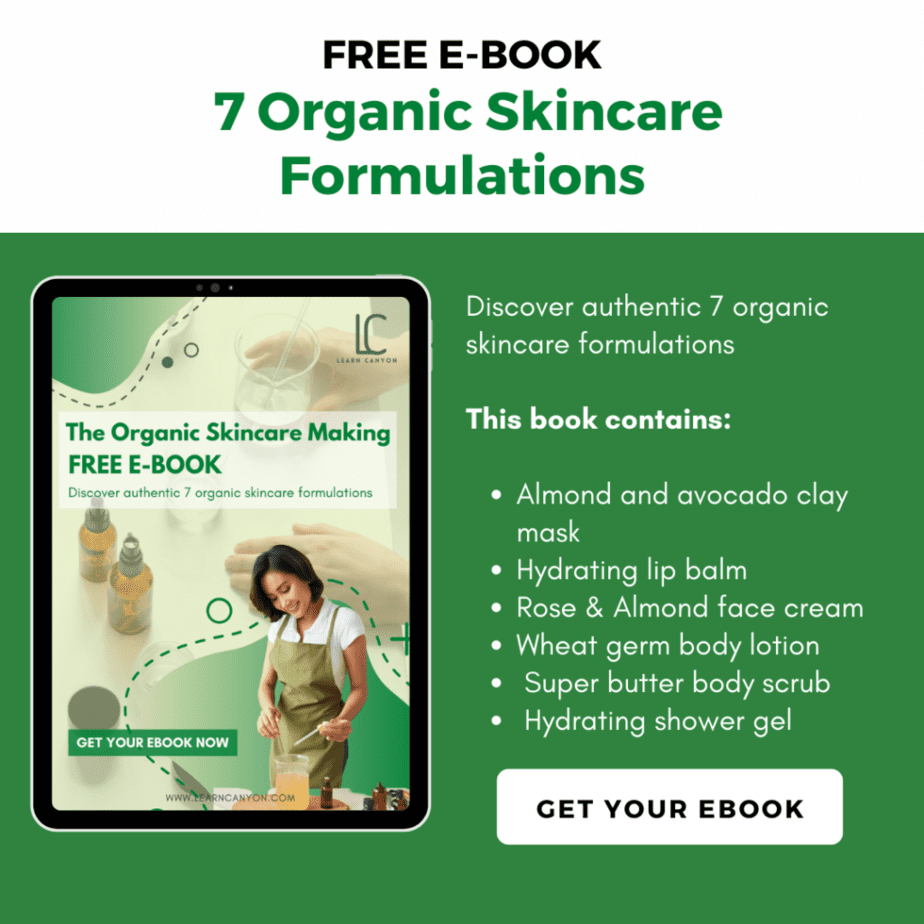
Calendula

Calendula is a wonderful plant that can benefit your skin in a variety of ways.
You certainly enjoy flowers in your yard, in a vintage vase, or even braided into your hair, but did you know that some flowers are also good for your skin? These lovely plants have many useful characteristics that can help to relax, moisturise, tighten, and protect your skin.
What’s our newest favourite? Calendula, often known as pot marigold, is a flower that grows in a pot. So, how can this beautiful flower make your skin look healthy, radiant, and youthful? Continue reading to learn more.
What is Calendula Extract?
Calendula officinalis is a flowering plant that belongs to the asteraceae family of daisies. Calendula has long been used as a medicinal plant, and its anti-inflammatory characteristics make it useful when applied externally to the skin (more on that in a minute).
Calendula, pronounced kuh-len-juh-luh, is named after the Latin word kalendae, which signifies new moon or first day of the month. This is because the vivid yellow and orange perennial is thought to bloom exclusively on the first of the month.
Calendula extract is derived from the flower’s leaves, petals, and seeds and has been used in Ayurvedic and Chinese medicine for centuries. Calendula Extract is a natural substance derived from marigold flowers. This ingredient possesses a number of characteristics that distinguish it from others.
| What is it? | Calendula is a cheerful yellow flower whose petals are commonly used in skin care products as infusions and extracts. |
|---|---|
| INCI | Calendula Officinalis |
| Appearance | The flower petals are tall and narrow, and the colour is a wonderful light yellow. |
| Texture | Soft |
| Recommended Usage | 1.0-10.0% |
| Solubility | Water soluble |
| Melting point | NA |
| Boiling point | NA |
| pH | 5.0-7.0 |
| Aroma | Herbaceous, with a mild aroma. |
| Why do we include it in formulations? | It's high in antioxidants and can aid to minimise edoema while also hydrating the skin. |
| How to work with it? | Extracts are used during the cooling down stage of a preparation. Use the formula to determine the solubility of miscible. |
| Applications | Calendula Extract was produced to provide skin conditioning advantages. |
| Absorption rate | Average to fast |
| Strength | It's reasonably priced, widely available, and has a strong brand image. |
| Weaknesses | Allergies are a potential with any botanicals. |
| Substitution | Chamomile, comfrey |
| How to store it? | Stored in a cool, dark and dry place. |
| Shelf life | The dried petals have a two-year shelf life. |
| Type of ingredient | It's quite hydrating, anti-inflammatory. |
|---|---|
| Main benefits | Calendula Extract is helpful in the treatment of redness, acne, and sunburn. Calendula is an antibacterial herb. |
| Who should use it | Calendula extract is great for oily, acne-prone, and sensitive skin. |
| How often can you use it? | To get the most out of Calendula Extract's sun-protective properties, apply it during the day with sunscreen. Calendula Extract can be added to your night-time regimen to reduce irritation and hasten the healing of blemishes. |
| Works well with | The majority of skincare products that contain essential oils or are based on oils. |
| Doesn't work with | If you're allergic to ragweed, daisies, marigolds, or other flowers in the asteraceae family, you should generally avoid it. |
| How to use | During the cool down phase of your formulation, the extract will add. |
Mechanisms of action
Carotenoids and flavonoids are present in calendula. Because of these antioxidants, the plant has been demonstrated to aid in wound healing, skin plumping through hydration and circulation, and (once again) inflammation prevention.
Benefits of Calendula extract
Calendula is a popular skincare ingredient that can help with everything from inflammation to dryness, and it’s especially good for sensitive skin. Let’s have a look at some of the advantages it has to offer.
- It has anti-inflammatory properties.
Inflammation can lead to a slew of irritating skin problems. Breakouts, rosacea, eczema, sensitivity, and even collagen loss can all be attributed to inflammation. Calendula’s calming properties can help with all of these inflammatory skin disorders. Calendula flowers contain a high amount of flavonoid, saponins, and triterpenoids, which have anti-inflammatory qualities.
Calendula’s capacity to suppress the release of histamines, which can cause redness, discomfort, allergies, and inflammation, is due to these compounds. Calendula’s delicate nature means it won’t dry out your skin when used to treat breakouts, and it’s safe to use with other acne-fighting substances like benzoyl peroxide and salicylic acid.
- It has a lot of hydrating properties.
You’ve probably heard that eating a diet rich in essential fatty acids is good for your health. Those same important fatty acids, such as the linoleic acid found in calendula oil or extract, can nourish your skin as well. They let your skin cells absorb nutrients and retain water for extended periods of time, which is fantastic news for those who suffer from chronic dryness. To put it another way, calendula-based cosmetics can help you get smoother, supplier, more nourished skin.
- It has the ability to tighten your skin.
Calendula’s nourishing properties assist to plump the surface of your skin in the short term, giving you firmer, supplier skin. Anti-inflammatory and antioxidant characteristics help to protect your skin’s collagen and elastin supply in the long run.
- It has the ability to shield your skin from external irritants.
Calendula is a top-notch protector thanks to the flavonoids that give it its soothing properties. Flavonoids are an antioxidant that protects your skin from free radical damage. “Free radicals are highly damaging chemicals that may wreak havoc on your skin,” if you need a refresher.
Side effects of Calendula extract
If you’re allergic to sunflowers, marigolds, or daisies, you’re likely allergic to calendula as well. To avoid a hypersensitive reaction, you should stay away from calendula and its preparations. Calendula consumption can alter women’s hormone balance and cause menstruation. As a result, before taking calendula preparations, you should see your doctor.
How to use it in formulation?
Calendula Extract, like aloe, has soothing and wound-healing properties, but it also provides UV protection. Of course, finding it in skin care products is the most obvious place to look.
Serums, oils, and creams are the most prevalent forms of it. Simply look for Calendula officinalis on the label or look for it as the active component on numerous items, which makes reading the label a lot easier.
Works well with other ingredients
Cypress, lavender, lemon, roseotto, frankincense, seabuckthorn, and saw palmetto combine well with calendula oil.




